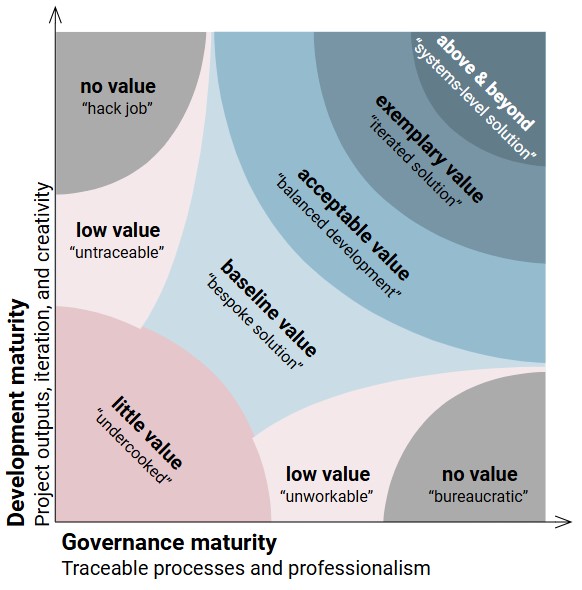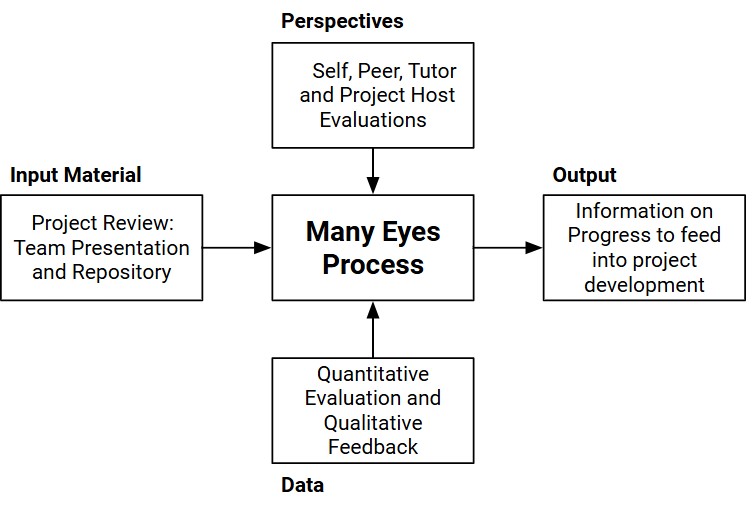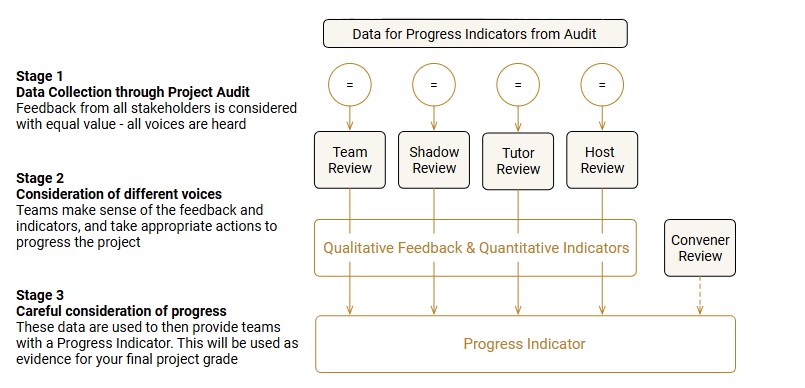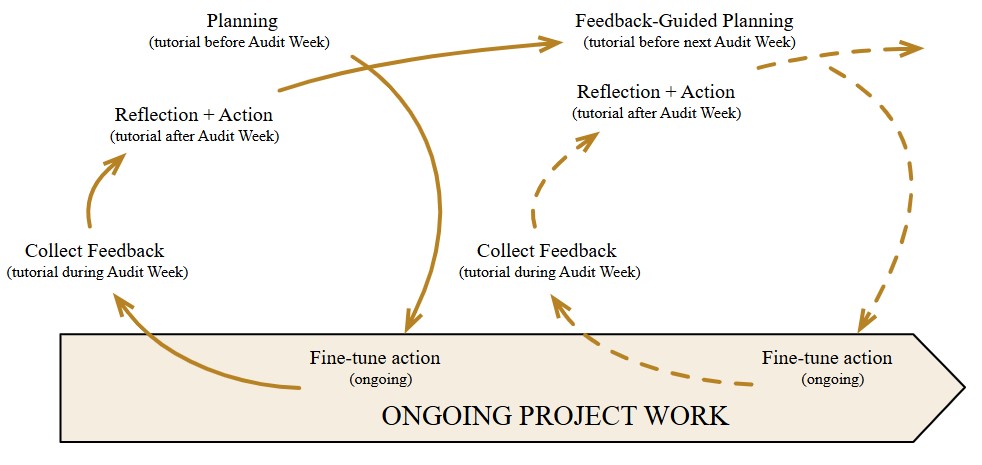Introduction #
In architecture, a capstone is the final, crowning element placed atop a structure. Similarly, the Capstone Design Project serves as the ANU School of Engineering’s culminating group project experience. It offers students an authentic, technical-based project opportunity, enabling them to apply the professional and technical skills and knowledge acquired throughout their program. This experience prepares students for the autonomy and expertise needed to excel as industry-ready graduates.
This course is designed to mimic an industry design problem as closely as practical in a university setting. Students select projects and are given a broad problem statement. From the problem statement, the students are responsible for developing the full set of requirements, key performance indicators, and milestones to guide the design deliverables. The students then proceed through a systems design process including conceptual design, sub-system requirements, and quantitative trade- off analyses, using the full range of systems engineering, engineering science and professional skills developed during the degree course. The course emphasises teamwork (both team leadership and membership), communication skills (formal and informal, written, and oral), team and personal management and a professional approach to both engineering design and project management.
Each Capstone project is unique, often positioned at different stages of the systems engineering lifecycle. To accommodate this diversity, the course moves beyond traditional assessment methods by employing a project audit process known as “many eyes.” This process delivers informed feedback from multiple perspectives, focusing on key dimensions of the project. Teams are expected to leverage this feedback to enhance both their project outcomes and their processes throughout the course.
Project selection, team formation & key events #
Projects in this course come from industry, research, and community partners. You can also ‘launch’ your own idea for a project, provided the convener approves it before Project Selection night.
Project selection will take place during the first week of your initial semester. The process for choosing projects and forming teams is:
- Projects descpritons and project agreements will be listed on Wattle during O-week, with time for students to review before the Project Selection night.
- To select your project, you must attend Project Selection night and ‘interview’ potential project hosts. Project hosts will interview you too!
- On Project Selection Night, we suggest you partner with a friend, buddy, or classmate. Project selection night will occur on Wednesday in week 1.
- After Project Selection Night and following successful completion of the course induction quiz, you and your ‘buddy’ will complete a Project Preference form (in Wattle), including tutorial availability. Preferences must be completed by midday Thursday of week 1. Project hosts will also indicate preferences to the teaching team.
- After Project Selection night, project preferences will be used to form teams of 4-6 students through mutual agreement with the host, convener, and accounting for tutorial availability.
- Project offers will be made via Wattle on Friday afternoon of week 1 and must be accepted by the start of week 2. You will remain a member of this team and tutorial throughout the course.
- Student project agreements will be issued to students on Wednesday of week 2. These will be sent to your student email address. For more information on project agreements see the Course Goverance document.
Key events #
Please make sure you are available for the following events:
- Wednesday Week 1, 5-7 pm - Project Selection night (only in the initial semester) - attendance required to join a team (via online conference software)
- Week 10 Initial Semester - Mid-project Presentations - attendance required to demonstrate your work so far. For more information see the Assessment guide.
- Week 11 Concluding Semester- Project Showcase - attendance is required to present and pitch your work. For more information see the Assessment guide.
For other course events refer to the Course Schedule.
What is ‘Value’ in Capstone? #
In Capstone, you should only be doing activities that help you to deliver value
The Capstone Design Project aims to deliver real value to all stakeholders: the project hosts, other identified stakeholders, the project team, and other associated teams. We define “value” as the complementary development of your project outcomes and governance of the project, at a systems level as shown in Figure 1. There is no prescribed outcome for projects, and each project will have different goals and challenges.
 Figure 1: Determining value in a Capstone Projects
Figure 1: Determining value in a Capstone Projects
What is “Many Eyes”? #
The Many Eyes Process encourages active participation throughout the evaluation process
Capstone uses a 360-degree feedback process incorporating the opinions of ‘many eyes’. The Many Eyes Process is informed by four key stakeholder perspectives: self-evaluation, a ‘shadow; or peer perspective, a tutor perspective, and a project host perspective. The inputs and outputs of this process are shown in Figure 2.
 Figure 2: Block diagram of the Many Eyes Process
Figure 2: Block diagram of the Many Eyes Process
Capstone includes four project audit weeks which are spaced throughout the year.
During Audit Week, all reviewers participate in a comprehensive project evaluation process. Students review their own team’s project work and act as a “shadow” reviewer for another team within their tutorial. Each review submission includes both a quantitative evaluation of the project’s quality (using indicators) and qualitative feedback aligned with the course’s project criteria. This feedback should be constructive, actionable, and the result of a careful and thoughtful review of the work.
The feedback and associated indicators are collected from multiple perspectives across a range of criteria, offering student teams a well-rounded understanding of their project’s progress. Unlike feedback from a single source, which may reflect specific interests, this multidimensional approach ensures a more balanced and comprehensive assessment. The process is designed to provide consistent evaluations of all teams and individual students, regardless of the unique nature of their projects and deliverables.
This feedback serves two critical purposes: it helps teams refine and improve their project work and provides examiners with valuable input to assess the quality of the team’s outputs.
The Many Eyes Process is used as input into the final determination of a progress indicator for each stage. This process generates inputs but is then considered individually by the examiners on a case-by- case basis, involving the review of comments, relative performance and -if necessary- a convener report. The stages can be seen in Figure 3. In Capstone the focus is on ‘value’. If you are using lanuguage such as ‘marks’ or ‘grades’, you are missing the point. Instead, focus on how your work will be ‘evaluated’ - the value you are generating for your host through the project outcomes and processes.
 Figure 3: Consideration from all sources
Figure 3: Consideration from all sources
Acting on audit feedback will help you to deliver value to the project host. The pattern of project audits combined with more informal feedback during tutorials and other meetings aims to promote an Action Learning Cycle, where tutorials are designed to help groups go through a process of Planning, Acting, Collecting Feedback on actions, and Reflecting, as seen in Figure 4.
 Figure 4: Action Learning Cycle in Capstone Design Project (image adapted from The University of Sheffield
Figure 4: Action Learning Cycle in Capstone Design Project (image adapted from The University of Sheffield
An action learning cycle encourages students to take thoughtful action, even at the risk of failure, as a way to drive learning and improvement. Rather than avoiding decisions out of fear of making mistakes, this approach emphasizes taking informed steps, reflecting on outcomes, and using those insights to refine and advance the project. By embracing this iterative process, and seeking feedback, teams can make meaningful progress and value whilst developing problem-solving skills.
See the Assessment Guide for a full run-down of the audit criteria and marking process used in Capstone Project.
Using a Systems Engineering approach in Capstone #
There is no pre-set methodology that your team needs to follow in your project. Students may choose to use the ANU System Engineering approach (ASEP), V-model, spiral model or other systems engineering approach. However, it is expected that teams will research not only technical aspects of the project but will also research the systems engineering approach that they will use and be able to demonstrate how they have aligned with that approach. Your project host may like you to follow a particular approach and should be consulted in this decision.
Being a reviewer #
Make sure you are clear what the role of a shadow is
Your task as a reviewer is to explore the work completed by the team and to use what you find (or don’t find) within the repository and landing page to complete the Project Review.
We expect that conducting an Audit and submitting the Project Review would take approximately 1-2 hours per review (self and shadow), outside of the tutorial. A good process is to:
- Familiarise yourself with the Audit marking criteria, and the Project Review form.
- Review the work completed by the team and form an overall view as to its quality.
Students can find the role of being a shadow challenging. Are you a shadow, observer or read-teamer? The role of Shadow is designed to provide critical review and an alternative perspective to project teams. The goal is to provide valuable insights which may identify weaknesses and vulnerabilities but can also highlight strengths. A shadow also experiences how another team operates and can reflect on how these insights can benefit their own team.
See the Assessment Guide for a further guidance on completing a review.
Key Course Information #
Students will complete the course over two consecutive semesters. A new intake will begin the course each semester. Therefore, the two semesters will be referred to as the initial and concluding semesters.
| Mode of Delivery | In person, and autonomous group work |
| Prerequisites | You must enrol in this course over two consecutive semesters. To enrol in this course, you must have completed ENGN3300 and at least 18 units of ENGN3000/4000 courses. |
| Incompatible Courses | ENGN4221 |
| Course Convener | Dr Zena Assaad |
| zena.assaad@anu.edu.au | |
| Linked.In | Dr Zena Assaad |
| Student Consultation | Book a meeting via email. |
| Course email | engn4300.cecc@anu.edu.au |
| Tutors | Details about your tutors can be found in Wattle. |
Learning outcomes #
- Technical. Synthesise technical knowledge and approaches to generate solutions to an open-ended engineering problem.
- Problem Solving. Develop, analyse, and critically evaluate alternative options to justify and generate solutions in a real-world project.
- Research Apply research skills and methodologies to identify, collate, summarise, and critically evaluate relevant literature, data, and sources.
- Teamwork. Apply project management and organisational skills to produce time-sensitive deliverables in a multi-disciplinary team.
- Communication. Transmit design decisions and solutions using appropriate media to professional and lay audiences.
- Reflection. Demonstrate and reflect on research, leadership, and creativity as an individual and within a multi-disciplinary team.
Assessment processes #
The Assessment Guide describes the assessment in detail.
The learning outcomes align with the following assessment processes:
- Project audits and reviews (65%, group and individual indicators)
- Mid-Project Presentation (10%)
- Project Showcase (5%)
- Professional reflections on your professional development (2 x 10% submissions)
Class Schedule #
Students and tutors, please take note of the following weekly schedule. *Notes: Bold indicates Important Activities all students are expected to attend.
| Initial Semester Week | Tutorial | Activity | Assessment or task |
|---|---|---|---|
| 0 | - | Release Project Briefs and project agreements | - |
| 1 | - | Introductory Lecture Project selection night | Project Selection Course induction quiz Project offers |
| 2 | - | - | Project acceptance Student Project Agreements issued |
| 3 | Team formation tutorial | - | - |
| 4 | Audit 1 tutorial | - | PA1: Audit reviews and Team member evaluation Project Repository and landing page Concept of Operations Initial WHS Risk Assessments |
| 5 | Audit feedback Tutorial | Module I part A | Response to PA1 feedback |
| 6 | Tutorial | Module I part B | Student Project Agreement deadline |
| - | - | - | |
| 7 | Tutorial | - | - |
| 8 | Tutorial | - | - |
| 9 | Tutorial | Module II part A | - |
| 10 | - | Module II part B | Mid-Project Presentation |
| 11 | Audit 2 Tutorial | - | PA2: Audit reviews and Team member evaluation Draft System Design Documentation |
| 12 | Audit feedback Tutorial | - | Response to PA2 feedback |
| Exam Period | - | - | Mid-Project Reflection |
| Conluding Semester Week | Tutorial | Activity | Assessment or task |
|---|---|---|---|
| 1 (13) | Tutorial | - | - |
| 2 (14) | Tutorial | - | - |
| 3 (15) | Tutorial | - | - |
| 4 (16) | Audit 3 tutorial | - | PA3: Audit reviews and Team member evaluation Systems Design Documentation |
| 5 (17) | Audit feedback Tutorial | Module III part A | Response to PA3 feedback |
| 6 (18) | Tutorial | Module III part B | - |
| - | - | - | |
| 7 (19) | Tutorial | Module IV part A | - |
| 8 (20) | Tutorial | Module IV part B | - |
| 9 (21) | Tutorial | - | Draft of showcase poster and pitch |
| 10 (22) | Audit 4 Tutorial | PA4: Audit reviews and Team member evaluation Draft Handover Showcase Poster and Pitch | |
| 11 (23) | - | - | Project showcase event |
| 12 (24) | - | - | Final Project Repository and documentation Completed Handover Final Team Review |
| Exam Period | - | - | Final Project Reflection |
See ANU MyTimetable details class locations and times.
Learning activities #
Tutorials #
The tutorials are structured to simulate a team business meeting with the “Capstone Engineering Firm”. Three teams or project are assigned to each tutorial, with a tutor acting as the tutorials ‘supervisor’. Each team will have equal time during the tutorial to present a summary of recent work and discuss progress with your tutor and shadows. A template for the summary can be found on Wattle. During tutorials you will take on an advisory role as a ‘shadow’ for another team. Tutorials are an opportunity to examine how another team operates and provide suggestions where possible.
Tutorial attendance:
- We expect students to attend the weekly tutorials.
- Attendance is not compulsory but strongly recommended as you develop your project with the guidance or the tutors and feedback from your peers.
- Your assessment will reflect your contribution and attendance via the audit process.
- Tutorials provide the opportunity to be a good Capstone citizen as a shadow team member.
Professional conduct in tutorials:
The aim of the Tutor Meetings is for you and your team to develop and practice the ability to succinctly present work, and to then address comments and questions in a coherent manner. Tutorials are an opportunity to get feedback from your peers, tutors, mentors, and other stakeholders. They are also an opportunity for you to develop your ability to understand and critique the work of others, and to ask well-formed questions that improve your understanding.
With this context in mind, it is important for everyone in the room to:
- Engage in the process - no mobile phones, laptops, et cetera.
- Be respectful of others - particularly the team presenting and their project host (if present).
- While robust, frank, and open discussion is encouraged, it is not acceptable for people to abuse and attack each other. The point of robust interactions is to help improve approaches and outcomes.
- Inform your tutor and your team if you will be unable to attend a tutorial
- If invited, introduce project hosts and other stakeholders who are present.
Audit Tutorials #
Project audits are focused on the independent review of your team’s work as recorded in your project repository. The presentation within the tutorial is not the focus of the audit, but is an opportunity to demonstrate your recent work to your reviewers.
Each team has equal time to update the class, including tutors and possibly conveners and project hosts, on the progress of their project. Teams are free to decide how to use this time is used; however, we strongly recommend that your team provide a 5-minute project update (with slides or handouts), with the rest of the time for questions. Excellent teams will anticipate the questions and have ready access to their repository and supporting data.
Skills Modules #
During Capstone you will participate in skills modules to assist you in developing specfic skills for your professional engineering practice. Completion of these modules will help deliver value to your project and build your professional skills.
Area experts will deliver the modules over two-hour workshops as specfied in the weekly schedule and may require the completion of pre-activities or homework tasks. Topics for previous skills modules have related to employability skills, teamwork skills and presentation skills to help with preparation for the Capstone Showcase.
Modules available will change each semester. Further details can be found on Wattle.
General expectations against grades #
The following table provides a guide to what quality of work we expect to see at each grade level:
| Grade | Expectations |
|---|---|
| Fail | Work which is incomplete or displays an inadequate understanding of the subject matter or an inadequate grasp of relevant skills. Poor attendance. |
| Pass | Work of satisfactory quality, which displays an adequate understanding of most of the subject matter and a sufficient grasp of relevant skills. Meets project host expectations. |
| Credit | Work of good quality, which displays a good understanding of the subject matter and a sound grasp of relevant skills. Delivers value that meets the expectations of the project host or target market. |
| Distinction | Work of superior quality, which demonstrates a thorough knowledge and understanding of the subject matter, proficiency in relevant skills, and analytical, design and implementation ability of a high order. Delivers value that exceeds the expectations of the project host or target market. |
| High Distinction | ork of exceptional quality, which demonstrates comprehensive understanding of the subject matter, mastery of relevant skills, sophisticated or original analysis, design and implementation, and outstanding quality in clarity, precision, and presentation of work. Delivers systems-level value that significantly exceeds expectations. |
Recommended resources #
When researching journals and industry standards for your project, remember many can be accessed via the ANU Library.
As a capstone course, the Capstone Design Project is designed for you to implement what you already know into a project, and independently learn what you need to know to complete the project. If you and your team are properly extending yourselves, you will find that there are gaps in your knowledge, from practical to technical, and this course is a great opportunity to fill those gaps.
There are great resources available for managing professional engineering projects:
And relevant standards can be accessed via the ANU Library:
- ISO/IEC/IEEE 15288 - Systems and software engineering - System life cycle processes
- ANSI/EIA 632 - Processes for engineering a system
- ISO/IEC/IEEE 26702 - Systems engineering - Application and management of the systems engineering process
- ISO/IEC/IEEE 29148 - Software and systems engineering - Life cycle processes - Requirements engineering
- ISO/IEC/IEEE 16326 - Systems and software engineering - Life cycle processes - Project management
And the graduate competencies that you are demonstrating in the project:
Other resources can be located on the course Wattle site and on the Systems Engineering Learning Commons - a SharePoint site containing course materials from ENGN2300 and ENGN2301.
Version Control #
Authorship & Citation #
This course is an evolution of semester long course, ENGN4221 Systems Engineering Project. The current course convener Dr Zena Assaad acknowledges the immense support from Dr. Chris Browne for his contribution to build up and set up a fantastic Capstone program.
The original Course Guide for ENGN4221 Systems Engineering Project and associated frameworks were designed by Dr Chris Browne over many years of teaching, and ideas from this design have been published in multiple sources. Parts of this text originate from A/Prof Shayne Flint, from when this course was a part of TechLauncher. I acknowledge the hundreds of students, dozens of tutors and number of colleagues and project hosts who have provided input into the design as it is today. The design of the course today would not be possible without the critical collaborations with A/Prof Shayne Flint and Dr Lynette Johns-Boast, who pioneered authentic project-based learning in the Research School of Computer Science for over a decade, and Prof Richard Baker who showed me a better way to learn. - Chris Browne
This acknowledgement cannot be removed from this guide without express permission from the Authors. If you do like ideas here, please cite the source:
Browne, C. Galvin, C, Simmons, J, 2024, “Capstone Design Project Course Guide”, ANU, accessed «date», «https://eng.anu.edu.au/courses/engn4300/students/ENGN4300_Course_Guide_S1.pdf»
Document Information #
| This document | ENGN4300 Course Outline Download as PDF |
| Format | PDF preferred, also available as web page |
| Document type | Information and Procedures |
| Purpose | Overview of course requirements and philosophy ENGN4300 Capstone Design Project |
| Semester | Semester 1, 2025 |
| Audience | Current students |
| Contact | engn4300.cecc@anu.edu.au |
| Version | v2024 S2.1.0 |
| Related content | ENGN4300 Assessment Guide and Course Governance |
Change log #
2025.S1.01: 17-01-2025
- Initial draft removing material now contained in the course governance document.
2025.S1.02: 13-02-2025
- Changes to timing of PA4 and Showcase.